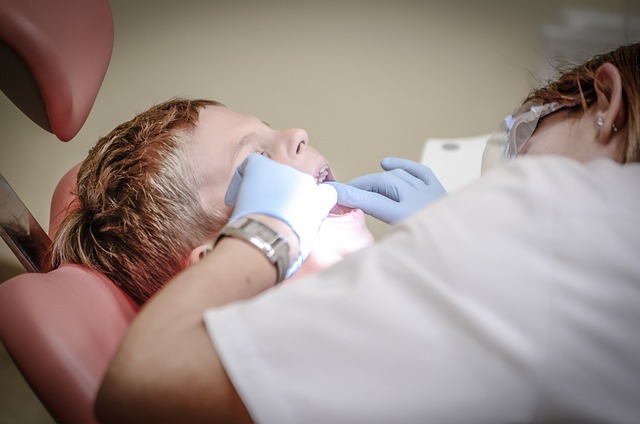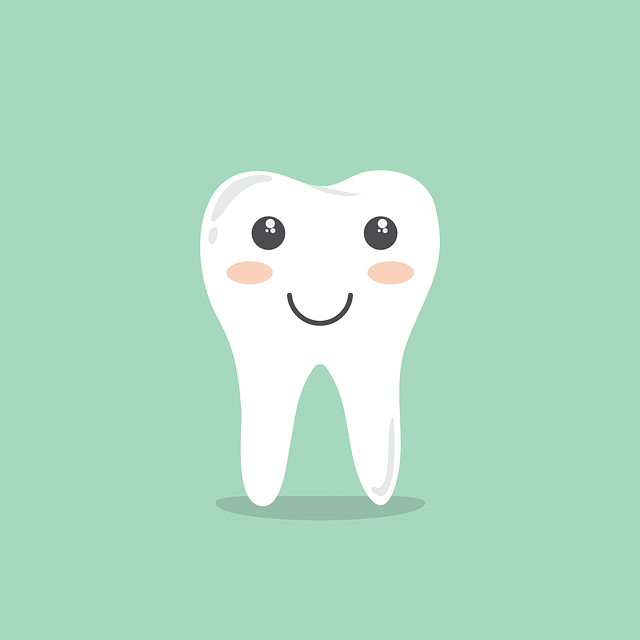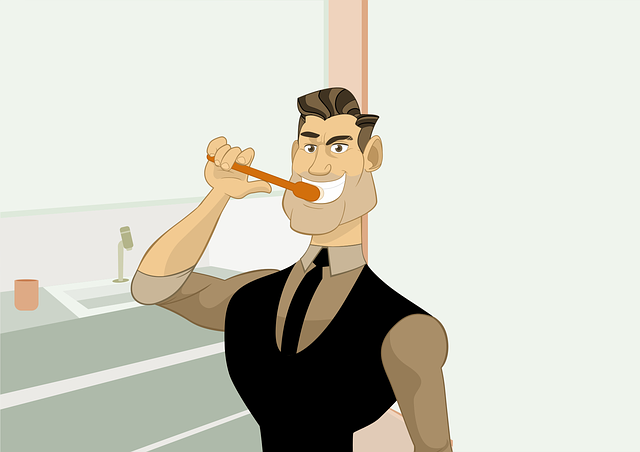Braces vs. Retainers: Can I Use Retainers Instead of Braces?
Are you pondering whether you can skip the traditional braces and opt for retainers instead? Well, you’ve come to the right place to get all the answers you need. When it comes to correcting dental misalignments, the decision between braces and retainers can be a bit perplexing. But fear not! In this article, we will delve into the world of orthodontics and explore the differences between braces and retainers, helping you make an informed choice that suits your unique needs. So, let’s get started on this journey to a straighter smile!
1. Understanding the Difference: Braces and Retainers Demystified
Braces and retainers are both orthodontic appliances used to correct and maintain the alignment of teeth. While they serve similar purposes, there are significant differences between the two. Understanding these differences is essential in choosing the right treatment option for your dental needs.
Here’s a breakdown of the key distinctions between braces and retainers:
- Function: Braces are designed to gradually shift misaligned teeth into proper position. They use brackets, wires, and sometimes rubber bands to exert pressure and guide teeth movement. On the other hand, retainers are used after braces or other orthodontic treatments to hold the teeth in their new positions and prevent them from shifting back.
- Visibility: Braces are typically more noticeable than retainers due to their metal brackets and wires. However, modern braces offer options like ceramic or clear brackets, making them less conspicuous. Retainers, on the other hand, can be made from clear plastic or wire, making them more discreet.
- Removability: Braces are fixed appliances that are bonded to the teeth and can only be removed by a dental professional. Retainers, on the other hand, can be removable or fixed. Removable retainers are taken out for eating, brushing, and flossing, while fixed retainers are bonded to the back of the teeth and cannot be removed by the patient.

2. Achieving a Perfect Smile: The Role of Braces and Retainers
The Role of Braces:
Braces have long been considered a reliable and effective method for achieving a perfect smile. These orthodontic devices play a crucial role in correcting misaligned teeth, overcrowding, and bite issues. By applying gentle pressure over time, braces gradually shift the teeth into their desired positions. Through the use of brackets, archwires, and elastics, braces provide the necessary support to guide teeth movement.
Orthodontists carefully customize braces to suit each patient’s unique dental needs, ensuring the most optimal results. Regular adjustments are made to tighten the braces, gradually aligning the teeth. Depending on the severity of the case, braces may be worn for a period of six months to two years. During this time, patients are advised to maintain proper oral hygiene and follow dietary restrictions to prevent any complications.
The Role of Retainers:
Retainers are an essential component in achieving and maintaining a beautiful smile. After the braces are removed, the teeth need to stabilize in their new positions. This is where retainers come into play. These custom-made devices are designed to hold the teeth in their corrected alignment, preventing any undesired shifting.
There are different types of retainers available, including removable and fixed options. Removable retainers can be taken out for eating and cleaning, while fixed retainers are bonded to the back of the teeth, providing a more permanent solution. Orthodontists recommend wearing retainers as instructed to ensure the long-term success of orthodontic treatment. Gradually, the duration of retainer wear will decrease, but occasional usage may be necessary to maintain the desired smile for a lifetime.

3. Braces: The Tried and True Method for Correcting Dental Misalignment
Braces are widely recognized as the most effective and reliable method for correcting dental misalignment. With their proven track record spanning decades, braces have consistently delivered remarkable results in straightening teeth and improving oral health. Here are some key points that highlight why braces remain the tried and true choice for achieving a beautiful and properly aligned smile:
- Customizable treatment: Braces can be tailored to address a wide range of orthodontic issues, including overcrowding, gaps, crossbites, and more. Orthodontists carefully assess each patient’s unique needs and design a personalized treatment plan using braces.
- Reliable and predictable: Unlike some newer orthodontic alternatives, braces have a long-standing reputation for delivering consistent and predictable results. The use of brackets, wires, and bands allows for precise control over tooth movement, ensuring gradual and steady progress towards a straighter smile.
- Proven track record: For decades, braces have been the go-to option for orthodontic treatment, successfully correcting misalignments in millions of patients worldwide. Their effectiveness and durability have stood the test of time, making them a trusted choice among both patients and orthodontic professionals.
When considering orthodontic treatment, it’s important to consult with an experienced orthodontist who can guide you through the process and recommend the most suitable treatment option for your specific needs. While there may be newer alternatives available, braces continue to be the gold standard in achieving a straight and healthy smile. With their customizable nature, reliable results, and extensive track record, braces offer a tried and true method for correcting dental misalignment.

4. Retainers: An Essential Tool for Maintaining Orthodontic Treatment Results
Once you complete your orthodontic treatment and achieve that perfect smile you’ve always wanted, it’s important to understand that the journey doesn’t end there. Retainers play a crucial role in maintaining the results of your orthodontic treatment. These custom-made devices are designed to keep your teeth in their new positions and prevent any unwanted shifting or relapse.
Here are some key reasons why retainers are an essential tool for maintaining orthodontic treatment results:
- Stabilizing the Teeth: Retainers help to stabilize your teeth in their correct positions, allowing the surrounding tissues and bones to adapt to the new alignment.
- Preventing Relapse: Without the consistent use of retainers, your teeth may gradually shift back to their original positions over time. Retainers act as a safeguard, ensuring that all the time, effort, and investment you put into your orthodontic treatment are not lost.
- Customized Fit: Retainers are made specifically for your mouth, ensuring a comfortable and secure fit. They are created based on the impression of your teeth, making them uniquely tailored to maintain the alignment achieved through orthodontic treatment.
Remember, wearing retainers as prescribed by your orthodontist is essential for a lifetime of beautiful smiles. Consistency is key when it comes to maintaining the results of your orthodontic treatment, and retainers are the indispensable tool that will help you enjoy your new smile for years to come.

5. Can Retainers Substitute Braces? Clearing up Misconceptions
Retainers are often misunderstood as a substitute for braces, but it’s important to clear up this misconception. While retainers can play a crucial role in maintaining the results achieved with braces, they cannot replace the corrective action that braces provide. Here are a few key points to consider:
1. Retainers and braces serve different purposes:
- Braces are designed to correct misaligned teeth, jaw discrepancies, and bite issues by applying controlled pressure to move teeth into their proper positions.
- Retainers, on the other hand, are primarily used to maintain the corrected positions of the teeth once braces are removed. They help prevent teeth from shifting back to their original misaligned positions.
2. Retainers are not suitable for everyone:
- Retainers are typically recommended for individuals who have already undergone orthodontic treatment with braces and have achieved the desired results.
- People with more severe dental issues may still require braces for effective correction. Retainers alone may not be sufficient to address complex misalignments or significant bite problems.
It’s essential to consult with an orthodontist to determine the most suitable treatment plan for your specific needs. While retainers are an integral part of maintaining a straight smile, they should not be viewed as a substitute for braces when corrective action is required.
6. The Pros and Cons: Braces vs. Retainers for Different Orthodontic Cases
When it comes to orthodontic treatment, choosing between braces and retainers depends on various factors, including the specific case and the patient’s preferences. Each option has its own set of pros and cons that should be carefully considered. Let’s delve into the advantages and disadvantages of braces and retainers for different orthodontic cases:
Braces:
- Pros:
- Braces are highly effective for straightening teeth and correcting complex dental issues.
- They can address severe misalignments, overcrowding, and bite problems.
- Braces provide consistent pressure, ensuring precise tooth movement over an extended period of time.
- Modern braces have become more comfortable and less visible, with options like clear or tooth-colored brackets available.
- Cons:
- Braces require regular adjustments and maintenance appointments.
- Oral hygiene can be more challenging with braces, as they can trap food particles and plaque.
- Certain dietary restrictions may apply, such as avoiding sticky or hard foods that can damage the braces.
- Braces may cause temporary discomfort or soreness after adjustments.
Retainers:
- Pros:
- Retainers are often used to maintain the results achieved after braces or other orthodontic treatments.
- They can help prevent teeth from shifting back to their original position.
- Retainers are usually less noticeable and more comfortable to wear compared to braces.
- They are removable, allowing for easier brushing and flossing, and the ability to enjoy a wider variety of foods.
- Cons:
- Retainers may not be suitable for all orthodontic cases, especially those requiring significant tooth movement.
- Compliance is crucial with retainers, as they must be worn consistently to maintain the desired results.
- Some patients may experience initial discomfort or speech difficulties when wearing a retainer.
- Retainers can be lost or damaged if not properly cared for and stored.
7. Making an Informed Decision: Consulting with an Orthodontist for Personalized Treatment
When considering orthodontic treatment, it is essential to consult with an orthodontist to make an informed decision. An orthodontist is a dental specialist who has received additional training and education in the field of orthodontics. By consulting with an orthodontist, you can receive personalized treatment options tailored to your specific needs and goals.
During a consultation with an orthodontist, they will conduct a thorough examination of your teeth, jaws, and facial structure. This examination may include taking X-rays, photographs, and dental impressions. By gathering these diagnostic records, the orthodontist can accurately assess your orthodontic needs and develop a customized treatment plan.
- Expert advice: Consulting with an orthodontist allows you to obtain expert advice from a specialist who has in-depth knowledge and experience in correcting dental and orthodontic issues.
- Treatment options: An orthodontist can provide you with a range of treatment options tailored to your specific needs, such as traditional braces, clear aligners, or other orthodontic appliances.
- Long-term benefits: By consulting with an orthodontist, you can ensure that the treatment you receive will not only straighten your teeth but also improve your overall oral health and function in the long run.
Remember, making an informed decision about your orthodontic treatment is crucial for achieving the best possible results. Consulting with an orthodontist will provide you with the necessary information and guidance to make the right choice for your oral health and well-being.
Frequently Asked Questions
Q: Can I use retainers instead of braces to straighten my teeth?
A: While retainers are effective in maintaining teeth alignment, they are not designed to correct significant misalignments or bite issues. Braces, on the other hand, are specifically designed to address these concerns and provide comprehensive teeth straightening solutions.
Q: What is the main difference between braces and retainers?
A: Braces are orthodontic appliances that apply constant pressure to gradually shift teeth into their proper positions. They consist of brackets, wires, and other components that work together to align teeth. Retainers, on the other hand, are custom-made devices that hold teeth in their corrected positions once braces are removed.
Q: Are retainers a viable alternative to braces?
A: Retainers are not a substitute for braces when it comes to correcting severe misalignments or bite issues. However, they are commonly used after braces to maintain the achieved alignment and prevent teeth from shifting back to their original positions.
Q: Can retainers be used to fix minor teeth misalignments?
A: In some cases, mild teeth misalignments or minor crowding can be addressed using retainers alone. However, it is crucial to consult with an orthodontist to determine the best course of action based on your individual dental needs.
Q: How long do braces need to be worn compared to retainers?
A: The duration of braces treatment varies depending on individual cases and the severity of the misalignment. On average, braces are worn for around 1-3 years. Retainers, on the other hand, are typically worn for a longer period, often several years or even indefinitely, to ensure the teeth remain aligned.
Q: Are braces more uncomfortable than retainers?
A: Braces may initially cause some discomfort or soreness due to the pressure applied to shift teeth. However, this discomfort significantly diminishes over time as the mouth adjusts to the braces. Retainers, on the other hand, are generally more comfortable to wear since they only aim to maintain the achieved alignment.
Q: Is the cost of braces significantly higher than that of retainers?
A: The cost of orthodontic treatment, including braces or retainers, can vary depending on factors such as the treatment duration, complexity, and location. Generally, braces tend to be more expensive than retainers due to their active role in teeth alignment. However, it is important to consult with an orthodontist to get an accurate estimate based on your specific needs.
Q: Can I switch from braces to retainers during my treatment?
A: Switching from braces to retainers before completing the recommended treatment duration is not advisable. Removing braces prematurely may result in incomplete teeth alignment and potential relapse. It is essential to follow your orthodontist’s guidance and complete the full treatment duration with braces before transitioning to retainers.
Q: How often should I wear retainers after braces?
A: After braces, it is typically recommended to wear retainers full-time initially, gradually transitioning to wearing them only at night. However, the exact duration and wearing schedule may vary depending on your orthodontist’s instructions and the stability of your teeth alignment.
Q: Can retainers fix gaps between teeth?
A: Retainers alone cannot fix significant gaps between teeth. Braces or other orthodontic treatments are generally required to close gaps effectively. However, for minor gaps, retainers may be used in conjunction with other dental procedures, such as dental bonding or veneers, to achieve the desired results.
Q: What happens if I don’t wear my retainer as prescribed?
A: Not wearing your retainer as prescribed by your orthodontist can result in teeth shifting back to their original positions, undoing the progress achieved during braces treatment. It is crucial to follow your orthodontist’s instructions diligently to maintain the alignment and ensure the long-term success of your orthodontic treatment.
Key Takeaways
In conclusion, when it comes to the decision between braces and retainers, it is important to consider the specific dental needs and goals of each individual. While retainers can be a suitable option for minor alignment issues or maintaining the results achieved by braces, they are not a substitute for braces when it comes to more complex orthodontic cases. Braces, on the other hand, offer a comprehensive solution for correcting various dental issues, including misalignment, overcrowding, and bite problems.
Key Takeaways:
1. Retainers can be used as a maintenance tool, preserving the results achieved by braces.
2. However, retainers are not a substitute for braces in cases that require more extensive orthodontic treatment.
3. Braces provide a comprehensive solution for correcting various dental issues, including misalignment, overcrowding, and bite problems.
4. Consulting with an orthodontist is crucial to determine the most suitable treatment option for your specific dental needs.
5. Remember, proper dental care and regular check-ups are vital for maintaining a healthy and beautiful smile, regardless of whether you choose braces or retainers.






